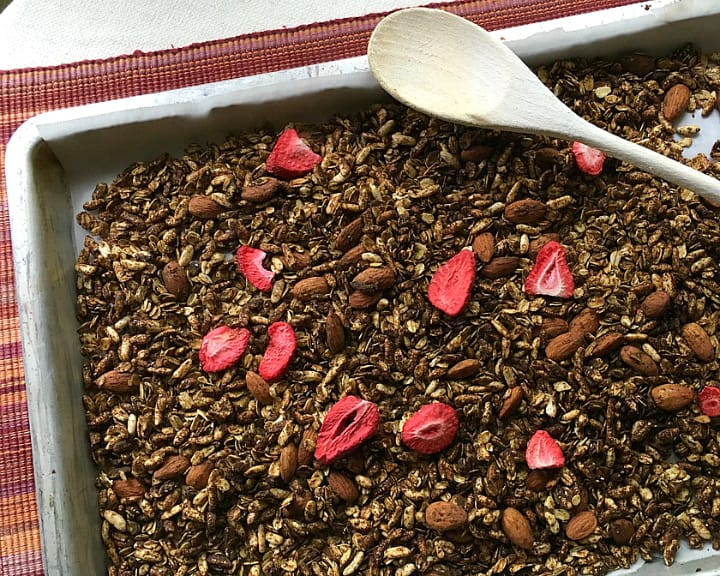From the menu of your favorite coffee shop to the delicious smoothie bowls in your Instagram feed, it feels like matcha is everywhere! There seem to be hundreds of uses for matcha when you check Pinterest. Everyone is talking about it, drinking it or cooking with it.
You feel like you need to give matcha a try but you’re not quite sure what all the fuss is about. What is matcha? Is it tea? Is it a superfood? Is it a supplement?
Yes, to all those things! Matcha is pure green tea in powder form. Instead of infusing tea leaves in water and drinking the infusion, you’re drinking the whole leaf. That means you’re getting all that tea has to offer in one super concentrated package. 1 teaspoon of matcha has about 128 mg of caffeine as well as the balancing amino acid l-theanine. You’ll get a quick but even burst of energy from a small cup of matcha.
Ingesting the whole leaf means you’re also getting an intense dose of the powerful anti-oxidants in tea. According to the book Tea: History, Terroirs, Varieties, 1.5 g of matcha (blended in 1 cup of water) contains 3,775 μmoles of anti-oxidants. You would need to drink 21 cups of tea made from jasmine pearls to get the same amount!
For sipping, a cup of matcha requires a little different preparation than your normal loose leaf tea. You’ll need a small bowl, a whisk and a strainer for a simple yet delicious pure matcha experience. You’ll also want to choose a ceremonial grade matcha for straight sipping. Ceremonial grade matcha should be a vibrant and darker shade of green than its culinary counterpart. Never bitter, you’ll find that ceremonial matcha, like the Organic Ceremonial Matcha from Amoda Tea, will have a grassy and slightly sweet flavor. Ceremonial matcha is typically served hot and made by whisking a small amount (.5 – 1 tsp.) with 2-4 oz. of water. You can also enjoy it cold. Try the simple recipe I shared in a recent Fit Life segment on Ozarks Today for easy iced matcha.
If you’re going to use matcha as a supplement by adding it to your favorite smoothie for energy or to boost up the nutrients in your chia pudding, you’ll do better with a culinary grade matcha. With a slightly astringent taste, culinary (or classic) grade matcha should be green in color (not yellowish) and not bitter. A great affordable culinary blend is Master Matcha from Kansas city based Hugo Tea Co. You’ll find that flavored blends, like the Vanilla Lavender Matcha from Plum Deluxe, can add a new twist to a matcha latte or matcha chia parfait. Functional blends with other superfoods mixed in, like the Recovery Blend from Amoda Tea, can add a boost to your Super Shake.
What are my favorite uses for matcha? Besides slowly savoring a small cup of pure matcha on a quiet morning, I swear by a matcha latte before a run. I make it with a little less milk than usual and with about a tsp. of Date Lady Date Syrup. I am convinced this pre-run drink makes me go just a little faster. I love to make the Matcha Mint smoothie bowl and Strawberry Matcha Granola from the Protein Ninja cookbook. Just beware…don’t eat them too close to bedtime!
Are you a matcha newbie? What other questions can I answer for you? If you’re a long time matcha fan, what’s your favorite way to indulge?
As I said, matcha makes a great addition to your morning Super Shake or your overnight oats. Not sure how to make either of those things? Click here to sign up for my email list and learn how to create them your FREE copy of the Kitchen Rescue Pak.




